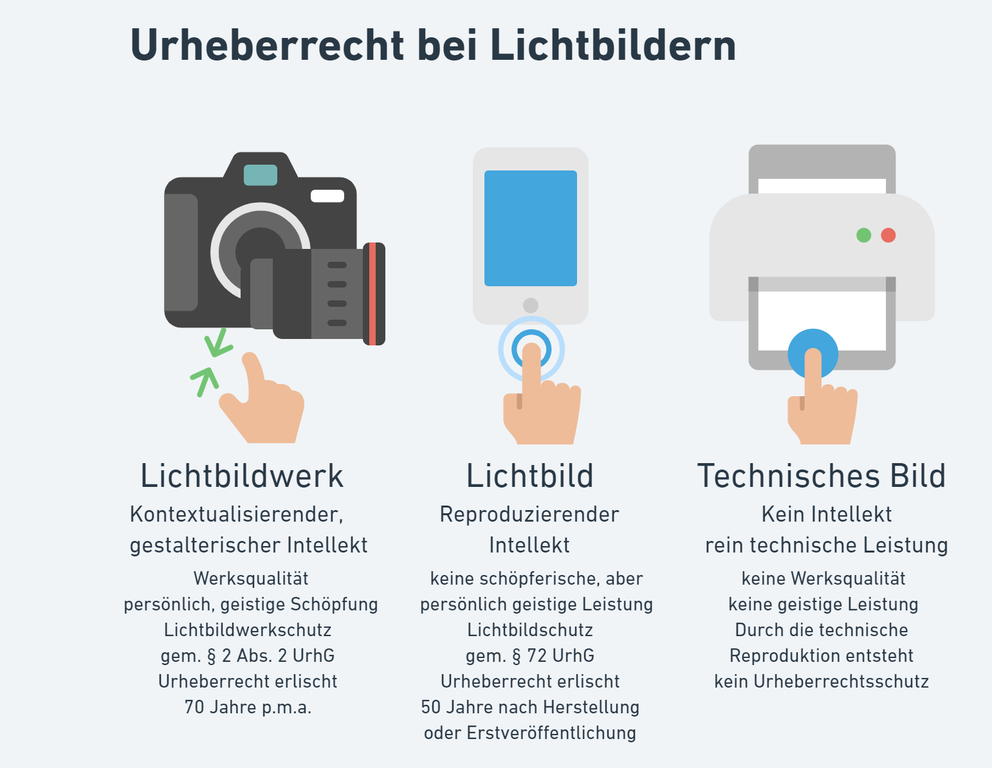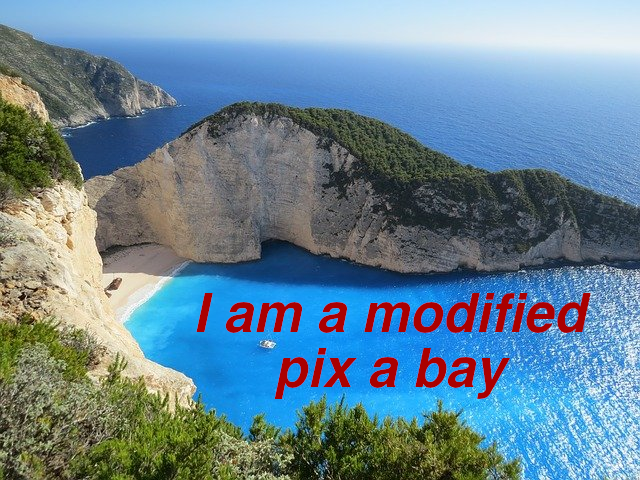← Once Again Musica-Viva in Austria | CC-BY Trolls →
Illustrating Open-Source Posts
I love ZEN-presentations, especially when they deal with open-source software. To create such files, we need pictures. Many pictures. That’s why I keep stumbling over the question of whether the FOSS licenses also allow us to use icons and logos in the same way as the code? Moreover: Under which conditions may we illustrate our articles with ‘internet-pictures‘ ? I’ve always wanted to make that clear to myself
A little background
Using photos from the Internet may be technically easy, to use them legally is difficult. Photographs and logos are also subject to the Copyright Act. That means at least that you must not use pictures, photographs, icons, or logos as long as the photographer did not grant you the usage rights. Unfortunately, sometimes the content of the pictures also restricts our exploitation rights. Conversely, freedom of art can occasionally grant us additional rights. Estimating the scope of action in this ‘snake pit’ can be quite complex.
In practice, however, an open-source activist’s situation is often simpler: Most of the time, she wants to “illustrate” her articles and lectures. There are suitable sources to do so: repositories and galleries with free photos and images.
The first point of contact
Wikimedia Commons offers a very good “collection of freely usable media files”. But some elements of this collection “may only be freely reused subject to certain restrictions”, because the licenses under which the pictures are published may impose requirements that must be fulfilled by the re-users.
Therefore, caution is advised: The condition of naming the ‘author’ adequately (CC-BY) can usually still be fulfilled. But the requirement not to use the work commercially (CC-BY-NC), must evoke caution: It should hardly be legally possible to decorate a text with such images because the meaning of ‘commercial‘ can be interpreted quite broadly. Three rule of thumbs support us to use Wikimedia Commons adequately:
- Don’t use images tagged ‘Non-Commercial’.
- Respect the other license requirements thoroughly.
- Include an image register with detailed information into your text
Some other image repositories
Beside Wikimedia Commons, there are other – from the viewpoint of an open-source activist – more or less good image databases:
- https://pxhere.com/ offers its image database under the headline “Free of copyrights under CC0. Do whatever you want“. The meaning of that eye-catcher is explained by the license page: The images can indeed be used for any purpose, and (almost) without any consideration. The only requirement is that people are not depicted in a disrespectful manner.
- https://www.pexels.com/ releases its pictures under its own Pexel-license. It says that “all photos […] on Pexels are free to use“, that “attribution is not required“, but “appreciated“, and that you may “modify” the Pexel photos. In other words, you get nearly the same rights and obligations as the Creative Commons Zero License grants or imposes on you.
- https://openclipart.org/ does not offer photos, but ‘drawings. When uploaded, the pictures of this collection are linked to the Creative Commons Zero 1.0 License. So, we have here the third image database that permits its users to do with the images what they want to do.
- https://pixabay.com/ offers its images under the so-called Pixabay License that at first glance looks like the licenses we’ve already met: It also says that photos can be downloaded, modified, and used free of charge and that a reference to the source is not required. But the license forbids to offer its pictures in other repositories or to sell unaltered printouts. The attentive user will stumble over that immediately: If she is paid for a text that uses such a photo, doesn’t she also implicitly sell the photo? What if her illustrated article is printed in a journal? Of course, more or less modified derivatives of the images can easily be generated, which would then no longer be subject to these prohibitions. But even then, a conscientious open-source activist will proceed with caution here.
- By evaluating other image databases freephotos.cc compiles lists of photographs concerning a specific topic. Some of these photographs should be “creative commons photos”. However: In the hit list, many images appear which are not free. And even the detail-view of many photographs does not clarify under which license the respective picture is offered. Hence, if you had to be careful with pixabay, then you must be extremely restrained with freephotos
And some additional image databases
- https://www.flickr.com/creativecommons/ : pictures, licensed under any of the creative commons licenses which thoroughly must be respected.
- https://piqs.de/ : all pictures are licensed under the creative commons by license (CC-BY-2.0-DE).
- https://unsplash.com/ : By using its Unsplash-License, this platforms grants rights in a similar way as pixabay.com does. It permits (nearly) everything and does not require anything, but asks for attributing the pictures taken from its database. But it forbids to intergate pictures into other image databases or to sell versions, which are not significantly modified (which is ultimately always a matter of discretion). Thus the granted right to use the pictures commercially is nevertheless restricted.
Some general caveats
Even if the images are really freely licensed, this does not release the user from their own care: If the photographer – voluntarily or involuntarily – has violated personal rights, trademark rights, or other rights and if we accept such a photo as our own, then these problems fall back to us. Two rules of thumb should help:
- Attention in case of depicted human beings and products
- Diligence in case of unknown buildings.
Logos and icons of open-source projects
Caution is also required when using graphic exhibits that come from open-source projects. The open-source licenses talk more about the software, its documentation, and its configuration files than about the accompanying images and whether they are covered by the license rules. Some licenses, like the Apache-2.0 even explicitly exclude “trademarks” from use.
If an open-source activist wants to use logos or icons from an open-source project in her articles, she has three options:
- She can search for a licensing statement concerning the images in the repository. Some projects or organizations offer separate regulations for this, e.g. the GIMP or the OSI.
- She could derive the permission to do so from the license texts argumentatively but would have to consider that this is not necessarily legally valid.
- She could consciously become a risk-taker and calm down by the ‘fact’ that an open-source copyright holder may not necessarily take action against those who use her logo to write about her program. But of course, I would never openly express such an ‘invitation’ to “disobedience”.
Image Trolls
Yes, meanwhile also this type of troll exists. They’re trying to sue for damages from a user who reuses CC-BY-3.0 licensed images and doesn’t exactly meet the terms. In my post ‘CC-BY-Image Trolls‘ I have described their approach and outlined possible defense strategies.
Summary
Here we are. Can we condense the text into a simple message? Yes, we can:
- Use only pictures from pxhere.com, pexels.com, openclipart.org, and Wikimedia-commons in your posts
- Respect the more complex rules of CC licenses in Wikimedia commons.
- Inside of the source code repositories, search for specific licensing statements concerning the icons and logos.
Register of pictures
| Image | Repository | Autorin | Lizenz | Kommentar |
 | fodina.de | ich | CC0 | Gimp mit U+2642 & U+2640 |
 | pxhere.com | anonyma | CC0 | optional |
 | Wikimedia Commons | Ellen Euler | CC-BY-SA | mandatory |
| openclipart.org | Francois Dutheil | CC0 | optional | |
|
| Wikimedia Commons | grunt, reibal | Trademark | optional |
|
| fodina.de | ich | CC0 | derivation |
| pxhere.com | anonyma | CC0 | optional | |
| pexels.com | Markus Wöckel | Pexel-License | optional | |
| openclipart.org | jhnri4 | CC0 | optional | |
| pixabay.com | Máté Markovics & ich | Pixabay License | optional | |
| pexels.com | Izhar Khan | Pexel-License | optional | |
| pexels.com | Donald Tong | Pexel-License | optional |
Link Reference
- https://commons.wikimedia.org/
- https://commons.wikimedia.org/wiki/Commons:Weiterverwendung
- https://creativecommons.org/licenses/by/3.0/de/
- https://creativecommons.org/licenses/by-nc/3.0/de/
- https://creativecommons.org/publicdomain/zero/1.0/
- https://github.com/GNOME/gimp/tree/master/docs
- https://github.com/GNOME/gimp/blob/master/docs/Wilber.xcf.gz.README
- https://gnu.org/licenses/license-list.de.html
- https://opensource.org/
- https://opensource.org/licenses/MIT
- https://opensource.org/licenses/alphabetical
- https://opensource.org/licenses/EPL-2.0
- https://opensource.org/licenses/Apache-2.0* https://openclipart.org/
- https://opensource.org/logo-usage-guidelines
- https://pexels.com/
- https://pexels.com/license/
- https://pixabay.com/
- https://praxistipps.chip.de/urheberrecht-bilder-aus-dem-internet-verwenden-das-muessen-sie-beachten_45598
- https://pxhere.com/
- https://pxhere.com/license
- https://freephotos.cc/










Via LinkedIn, I got as hint to other databases: